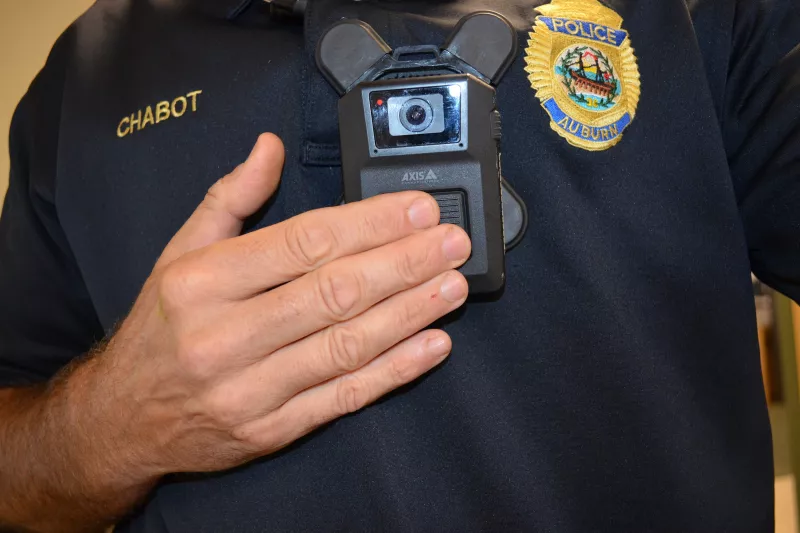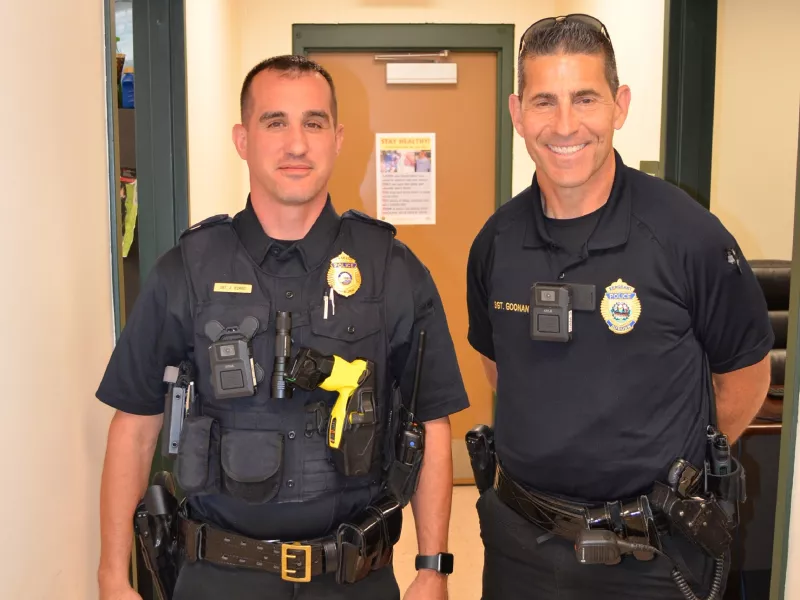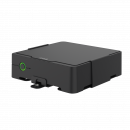
Securing a chronicle of corroborating evidence
The Auburn Police Department uses Axis body worn cameras to capture officer interactions, record on-the-street interviews, and improve accuracy of incident reports. The cameras also record eye movement that indicates a driver is impaired.
From agriculture to bedroom community
Sandwiched between the more densely populated communities of Manchester and Derry, the town of Auburn, New Hampshire is the epitome of smalltown, USA. Once mainly an agriculturally based town, Auburn now serves as a bedroom community for commuters working in Boston and other nearby metropolitan centers. The town’s scenic beauty and relaxed lifestyle offers residents a welcome respite from the busy pace of urban living, with the convenience of proximity to big city attractions when desired.
The Axis body worn cameras provide great support for our officers. They not only improve their safety on the street, but also back up their incident reports with indisputable forensic evidence.

“Even as a small bedroom community we get our fair share of burglaries, motor vehicle and narcotics violations, criminal trespassing and things like that,” says Lt. Chip Chabot of the Auburn Police Department. “While there have been negligible complaints about the conduct of our Auburn officers, we’ve seen a general erosion in public respect for local law enforcement across the country.”
When New Hampshire’s governor signed an executive order mandating that all State Police be equipped with body worn cameras and surrounding communities began adopting the policy as well, Auburn PD decided it was time to follow suit.
“Ours is a small police department,” shares Lt. Chabot. “We only have 10 full-time officers and a handful of part-time officers. So, it was important that we find a body camera solution that fit our needs rather than rely on a solution better suited for a much larger police force.”

Finding a just-right system
“We weren’t interested in a cloud solution,” states Lt. Chabot. “We wanted to store our video on site, disconnected from the internet, to prevent the footage from being hacked.”
Extended battery life was another must. “Our officers work 12-hour shifts,” explains Lt. Chabot. “We wanted camera batteries that would last the whole shift.”
Lt. Chabot compiled a checklist of other requirement as well: easy to use and easy to wear, high quality images and audio, and responsive customer support. As he investigated vendor solutions, it soon became evident that the only body worn camera system to fit the bill was from Axis.

“When Pelmac Industries presented us with the Axis solution we knew we had a winner,” says Lt. Chabot. “The one-tap activation and the pre-recording buffer ensure that officers capture the entire incident even if there’s a delay in turning on the camera.”
Lt. Chabot also appreciated the high image resolution coupled with wide dynamic range sensors that enable the cameras to record quality video even in difficult lighting conditions. He liked that the dual microphones provide noise suppression to enhance the clarity of the audio track. And with the Klick Fast mounting system his officers can quickly attach and securely lock their cameras to their vests or other clothing.
“Downloading video and recharging the cameras after every shift is really simple,” reports Lt. Chabot. “The officer just puts their camera in the docking station and the video automatically gets offloaded and the camera battery gets recharged. The system controller then sends the video to our AXIS Camera Station Pro video management system where it’s sorted into the officer’s digital folder so it can be easily located for review.”
As a precaution against hacking, the AXIS Camera Station Pro software resides on a sequestered server that isn’t connected to the internet. When Lt. Chabot needs to send a video clip to prosecutors or defense attorneys, he offloads it to a thumb drive and sends it from another network connected computer.
“We like that the video stays encrypted from the time it’s captured to when it’s offloaded and stored on the server,” says Lt. Chabot. “That extra layer of security gives us peace of mind that even if someone somehow got hold of the footage, they wouldn’t be able to access it.”
The lieutenant cited other features of the system that he felt gave his officers an added measure of safety on the street. One is the ability to operate in stealth mode where the officer could turn off indicator lights and silence notification beeps and vibrations to record video covertly. Another is the camera’s ability to automatically begin recording if it detects that the officer had fallen.
Setting the record straight
While body camera video plays a key role in separating legitimate complaints from false accusations, it also helps officers verify that their incident reports accurately reflect the sequence of events. “If the written report deviates from the video evidence gathered at the scene, it can raise serious doubts, and even lead to a case being thrown out,” explains Lt. Chabot.
Detectives on the police force routinely use the Axis body worn cameras when interviewing witnesses at the scene. “It really helps us assist victims of crime because investigators can use the cameras to collect witness statements while incident details are still fresh in their minds,” says Lt. Chabot. “At the same time, investigators can be using the cameras to create a forensic record of what’s actually there at the scene,” he continues.
Learning to be better officers
Body camera data is a great source of training content for the department. Auburn officers are encouraged to review their body camera video, notice what they’re doing right or wrong, and make adjustments accordingly.
As they’ve become more familiar with the technology, officers have discovered that Axis body worn cameras are actually very effective at capturing the telltale eye movement that indicates a person has been drinking alcohol. “It’s an involuntary jerking of the eyeballs called nystagmus,” explains the lieutenant. “An officer can write about it in a report, but the statement becomes indisputable when you can see the proof on the video. Our town prosecutor is really looking forward to introducing it into court.”
Relying on a supportive partnership
“While Axis offers a great solution, what clinched the deal was the outstanding customer support,” says Lt. Chabot. “Both Pelmac and Axis have been very responsive to our needs, whether it’s adjusting the one-tap button sensitivity, helping us set up login credentials for our officers, or providing a mobile app that lets officers view and attach notes to the video while they’re still in the field and events are still fresh in their memory.”
Products & solutions


